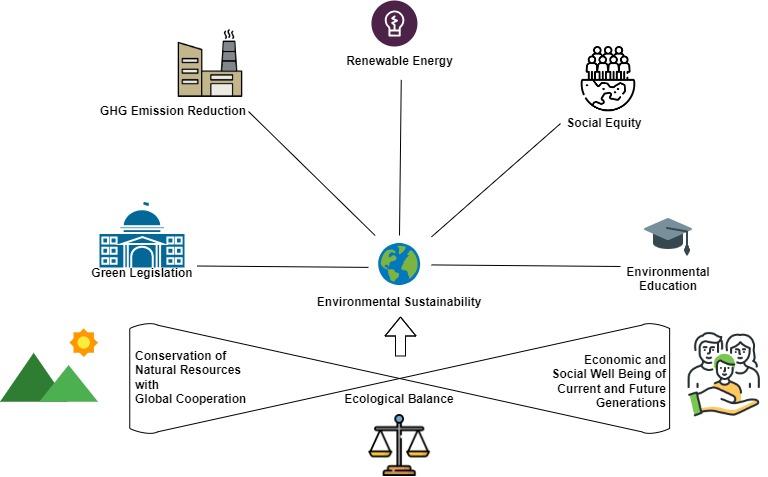Saisanthosh Vamshi Harsha Madiraju;1 Abhiram Siva Prasad Pamula 2
1Department of Civil and Environmental Engineering, University of Toledo, Toledo, OH, 43606, USA7
2Department of Civil, Construction and Environmental Engineering, Marquette University, Milwaukee, WI, 53233, USA
*Corresponding Author Email: smadira@rockets.utoledo.edu…
Highlights
- The 1968 Fair Housing Act banned redlining but the legacy of this historic discriminatory housing policy still haunts many Americans living in urban areas
- People living in urban neighborhoods with extreme poverty and higher racial diversity are more likely to be exposed to high heat compared to wealthier and whiter communities
- Communities of color and resource-limited residents in urban areas tend to have lower tree canopy and higher percentages of impervious surface
- The connections between tree cover and temperature show that the problem of urban heat islands is solvable
- Investments in green infrastructure that are made with grassroot community support, neighborhoods can become greener, cooler, and healthier
Graphical Abstract

1. Introduction
Environmental sustainability underscores the critical need to maintain and preserve the balance of Earth’s ecosystems for the well-being of current and future generations. At its core, environmental sustainability addresses the interconnectedness of human activities with the natural environment, ensuring that our actions do not deplete natural resources, degrade ecosystems, or disrupt the planet’s ability to support sentient life (Raskin et al., 2010). This concept encompasses social, economic, and ethical dimensions, emphasizing the importance of creating a holistic and resilient approach to living on planet Earth (Rolston, 2020).
One of the primary pillars of environmental sustainability is the conservation of biodiversity. Earth’s rich biodiversity, resulting from millions of years of evolution, creates a web of interconnected species and ecosystems that support life in various forms. However, human activities such as deforestation, habitat degradation, and pollution have accelerated biodiversity loss. Environmental sustainability aims to protect ecosystems and their biodiversity, recognizing their intrinsic value and their crucial role in the environment (Verma et al., 2020).
Earth provides us with finite resources, including water, air, soil, minerals, and energy. Unsustainable consumption of these natural resources, driven by population growth and technological progress, has led to environmental degradation. Achieving sustainable development requires a shift towards more efficient and equitable use of resources (Subramanian, 2018). Sustainable development goals promote renewable energy, resource conservation, circular economic principles, and sustainable agricultural practices that prioritize soil health and water conservation.
Climate change, due to the accumulation of greenhouse gases (GHGs) in the atmosphere, poses challenges such as extreme weather events and exacerbates the frequency and intensity of natural disasters (Kumar et al., 2021). Therefore, the efficient use of natural resources while minimizing consumption highlights the importance of environmental sustainability. For instance, the use of fossil fuels, land-use changes (burning forest areas for mining and agriculture expansion), and industrial emissions produce carbon dioxide and other GHGs, causing global warming and rising sea levels. Mitigation efforts to reduce GHG emissions, shift to renewable energy sources, and maintain resilient communities and ecosystems are essential. Fundamental business reforms and green energy policies are needed to address the negative impacts of climate change (VijayaVenkataRaman et al., 2012).
Sustainability also recognizes the relationship between social and economic factors. Social equity is key to a well-functioning environment with a fair distribution of resources, opportunities, and societal benefits. Sustainable development aims to lift people out of poverty, promote prosperity, and ensure equitable sharing of development benefits (Elmqvist et al., 2014). Addressing environmental justice issues is crucial because vulnerable communities often bear the brunt of environmental degradation and climate change impacts. Prioritizing social equity in environmental sustainability seeks to create a just and inclusive society where the well-being of all members is valued.
Economic sustainability focuses on the long-term viability of economic systems without compromising environmental and social well-being. Traditional models of economic growth prioritize short-term gains, often leading to resource degradation, environmental harm, and social inequality (van Niekerk, 2024; Xiao et al., 2024). Sustainable development encourages green circular economic principles, where economic activities are designed to reduce waste, use resources efficiently, and contribute to environmental and social well-being. This paradigm shift requires new business models, responsible corporate practices, and policies encouraging sustainable construction and resource use.
Furthermore, awareness plays a crucial role in achieving sustainable development goals. A well-informed, environmentally conscious public is more likely to make sustainable choices and advocate for policies that prioritize the planet’s well-being. Environmental education provides an understanding of the complex relationship between human activities and the natural world, enabling individuals to make informed decisions in their daily lives (Devendrapandi et al., 2024). Moreover, raising awareness about environmental challenges showcases success stories in sustainable practices, inspires collective action, and mobilizes communities to work towards a more sustainable future. Through education, we can instill a sense of responsibility and stewardship for the environment, creating a generation of environmentally literate citizens who actively contribute to sustainability efforts.
Global collaboration is essential to address environmental challenges that transcend national boundaries (Olorunsogo et al., 2024). Environmental sustainability requires collaborative international efforts to develop and implement effective policies, share knowledge and resources, and tackle global issues such as climate change, biodiversity loss, and environmental pollution (Kaur, 2024). Global partnerships and collaborations provide a platform for working towards a more sustainable future, where collective intellectual property can be used to manage natural resources, address shared environmental challenges, and ensure the well-being of the entire planet.
In summary, environmental sustainability is a multifaceted and interconnected concept that transcends environmental concerns alone. It encompasses biodiversity conservation, responsible resource use, climate change mitigation, social equity, economic viability, education, and global cooperation. Achieving environmental sustainability requires a paradigm shift in how we perceive and interact with the natural world, recognizing the intrinsic value of ecosystems, the finite nature of resources, and the importance of social and economic well-being. By embracing sustainable practices in our daily lives, businesses, and policies, we can contribute to a healthier planet and create a legacy of stewardship for future generations.
2. ISO Certifications to Embrace Sustainable Practices in an Organization
In the contemporary world, where industries drive consumer economies, there is a critical need for industries to comply with environmental policies. This compliance, combined with sustainable manufacturing processes in emerging economies, drives society and governments worldwide to conserve natural resources and achieve environmental sustainability (Yasir et al., 2020). Several ISO (International Organization for Standardization) certifications are available to support industrial sectors and organizations in achieving environmental sustainability. Specific standards apply to an organization depending on its activities, industry, and objectives (ISO, n.d.). Significant certifications include:
- ISO 14001: Environmental Management Systems (EMS): Provides a framework for organizations to manage and improve their environmental performance (International Organization for Standardization, 2018).
- ISO 14064: Greenhouse Gas Accounting and Verification: Specifies principles and requirements at the organizational and project levels for quantifying and reporting greenhouse gas emissions and removals (Shideler & Hetzel, 2021).
- ISO 14006: Environmental Management Systems – Guidelines for Incorporating Ecodesign: Offers guidance on integrating environmental aspects into product design and development processes (Vattamparambil Nalan & Satheesan, 2020).
- ISO 50001: Energy Management Systems (EnMS): Aims to help organizations improve energy performance and reduce energy costs (Pauliková & Chovancová, 2022).
- ISO 14020 series: Environmental Labels and Declarations: Includes various standards related to environmental labeling and declarations, such as ISO 14024 for Type I environmental labeling (Minkov et al., 2018).
- ISO 14044: Life Cycle Assessment (LCA): Guides organizations in assessing the environmental aspects and potential impacts throughout a product’s life cycle (Rimano et al., 2021).
- ISO 14046: Water Footprint: Assists in quantifying and reporting water use related to a product’s life cycle (Berger et al., 2016).
- ISO 26000: Social Responsibility: While not specific to environmental aspects, it guides integrating social responsibility into an organization’s practices, often including environmental considerations (Herciu, 2016).
- ISO 20400: Sustainable Procurement: Aims to assist organizations in integrating sustainability into their procurement processes (Messah, 2023).
- ISO 14031: Environmental Performance Evaluation: Provides guidelines for evaluating an organization’s environmental performance (Falqi et al., 2020).
Certification to these ISO standards demonstrates a commitment to environmental sustainability and responsible business practices. Organizations often pursue these certifications to enhance their efforts towards achieving environmental sustainability.
In conclusion, the journey towards environmental sustainability is not a destination but a continuous commitment to living in harmony with the Earth, fostering a resilient and flourishing world for all.
References
Berger, M., Pfister, S., & Motoshita, M. (2016). Water footprinting in life cycle assessment: How to count the drops and assess the impacts? In M. Finkbeiner (Ed.), Special Types of Life Cycle Assessment (pp. 73–114). Springer Netherlands. [Google Scholar] [CrossRef]
Devendrapandi, G., Khatri, R., Aggarwal, P., & Ponnusamy, V. K. (2024). Unearthing Earth’s secrets: Exploring the environmental legacy of contaminants in soil, water, and sediments. Environmental Research, 118246. . [Google Scholar] [CrossRef]
Elmqvist, T., Bai, X., Frantzeskaki, N., & Parnell, S. (2014). Global sustainability & human prosperity: Contribution to the post-2015 agenda and the development of sustainable development goals. Nordic Council of Ministers. [Google Scholar]
Falqi, I., Alsulamy, S., & Mansour, M. (2020). Environmental performance evaluation and analysis using ISO 14031 guidelines in construction sector industries. Sustainability, 12(5), Article 5. [Google Scholar] [CrossRef]
Herciu, M. (2016). ISO 26000 – An integrative approach of corporate social responsibility. Studies in Business and Economics, 11(1), 73–79. . [Google Scholar] [CrossRef]
International Organization for Standardization. (2018). Contributing to the UN Sustainable Development Goals with ISO standards. International Organization for Standardization. [Website]
ISO – Standards. (n.d.). Retrieved February 3, 2024. [Website]
Kaur, N. (2024). The impact of international environmental law on constitutional provisions of India related to environmental protection and sustainable development. Available at SSRN 4697849. . [Google Scholar] [CrossRef]
Kumar, A., Nagar, S., & Anand, S. (2021). Climate change and existential threats. In Global Climate Change (pp. 1–31). Elsevier. . [Google Scholar] [CrossRef]
Messah, Y. A., Abduh, M., & Wirahadikusumah, R. D. (2023). Conceptual framework for sustainable procurement of construction works. International Journal of Procurement Management, 17(4), 488–506. [Google Scholar] [CrossRef]
Minkov, N., Bach, V., & Finkbeiner, M. (2018). Characterization of the Cradle to Cradle CertifiedTM products program in the context of eco-labels and environmental declarations. Sustainability, 10(3), Article 3. https://doi.org/10.3390/su10030738 . [Google Scholar] [CrossRef]
Olorunsogo, T. O., Ogugua, J. O., Muonde, M., Maduka, C. P., & Omotayo, O. (2024). Environmental factors in public health: A review of global challenges and solutions. World Journal of Advanced Research and Reviews, 21(1), 1453–1466. . [Google Scholar] [CrossRef]
Pauliková, A., & Chovancová, J. (2022). Improving energy efficiency through energy management systems implementation: A cluster analysis of ISO 50001. Crisis Management Safety and Foresight for-Based Sectors SMEs Operation in Global Environment, 319. . [Google Scholar]
Raskin, P. D., Electris, C., & Rosen, R. A. (2010). The century ahead: Searching for sustainability. Sustainability, 2(8), 2626–2651. [Google Scholar] [CrossRef]
Rimano, M., Simboli, A., Taddeo, R., Del Grosso, M., & Raggi, A. (2021). The environmental impact of organizations: A pilot test from the packaging industry based on organizational life cycle assessment. Sustainability, 13(20), Article 20. [Google Scholar] [CrossRef]
Rolston, H., III. (2020). A New Environmental Ethics: The Next Millennium for Life on Earth. Routledge. . [Google Scholar] [CrossRef]
Shideler, J. C., & Hetzel, J. (2021). Introduction to climate change management: Transitioning to a low-carbon economy. Springer Nature. . [Google Scholar] [CrossRef]
Subramanian, K. R. (2018). The crisis of consumption of natural resources. International Journal of Recent Innovation and Academic Research, 2(4), 8–19. [Google Scholar]
van Niekerk, A. J. (2024). Economic inclusion: Green finance and the SDGs. Sustainability, 16(3), 1128. [Google Scholar] [CrossRef]
Vattamparambil Nalan, V., & Satheesan, S. (2020). Life cycle perspective in relation to ISO 14001: 2015 and associated impacts of Design For Environment (DFE) and sustainable development. . [Google Scholar]
Verma, A. K., Kumar, K., & Verma, P. (2020). Biodiversity and Sustainability. In Sustainability: Fundamentals and Applications (pp. 255–275). [Google Scholar] [CrossRef]
VijayaVenkataRaman, S., Iniyan, S., & Goic, R. (2012). A review of climate change, mitigation and adaptation. Renewable and Sustainable Energy Reviews, 16(1), 878–897. [Google Scholar] [CrossRef]
Xiao, Z., Duritan, M. J. M., Han, D., & Zong, Y. (2024). How does green education result in resource extraction and consumption sustainability? Resources Policy, 89, 104626. . [Google Scholar] [CrossRef]
Yasir, M., Majid, A., & Qudratullah, H. (2020). Promoting environmental performance in manufacturing industry of developing countries through environmental orientation and green business strategies. Journal of Cleaner Production, 275, 123003. . [Google Scholar] [CrossRef]
About this Article
Cite this Article
APA
Madiraju S.V. H. & Pamula A. S. P. (2024). Environmental Sustainability: A Continuous Commitment to Living in Harmony with the Earth. SustainE. 1(2), 1-8.
Chicago
Saisanthosh Vamshi Harsha Madiraju and Abhiram Siva Prasad Pamula. “Environmental Sustainability: A Continuous Commitment to Living in Harmony with the Earth.” SustainE 1, no. 2 (March 28, 2024): 1–8.
Received
11 February 2024
Accepted
25 March 2024
Published
28 March 2024
Corresponding Author Email: smadira@rockets.utoledo.edu
Disclaimer: The opinions and statements expressed in this article are the authors’ sole responsibility and do not necessarily reflect the viewpoints of their affiliated organizations, the publisher, the hosted journal, the editors, or the reviewers. Furthermore, any product evaluated in this article or claims made by its manufacturer are not guaranteed or endorsed by the publisher.
Distributed under Creative Commons CC-BY 4.0
Share this article
Use the buttons below to share the article on desired platforms.













